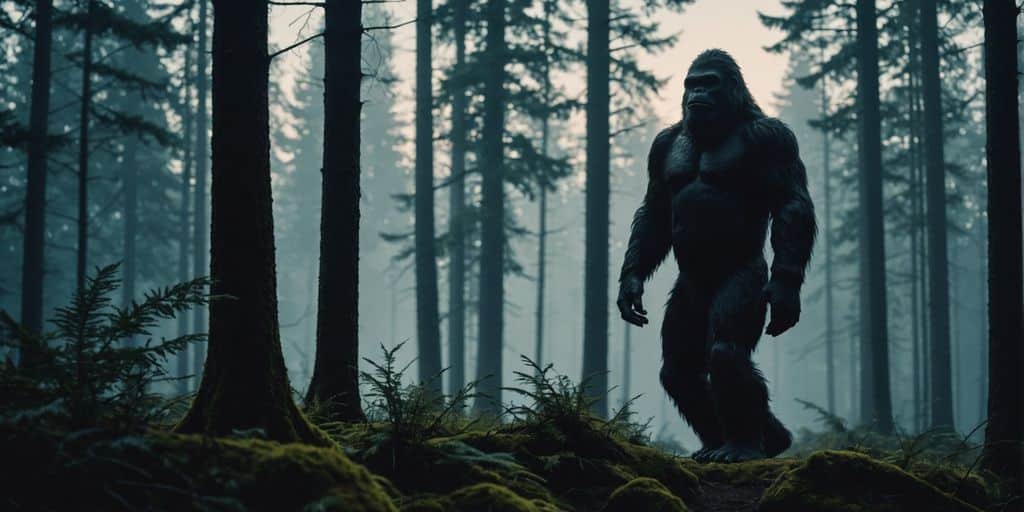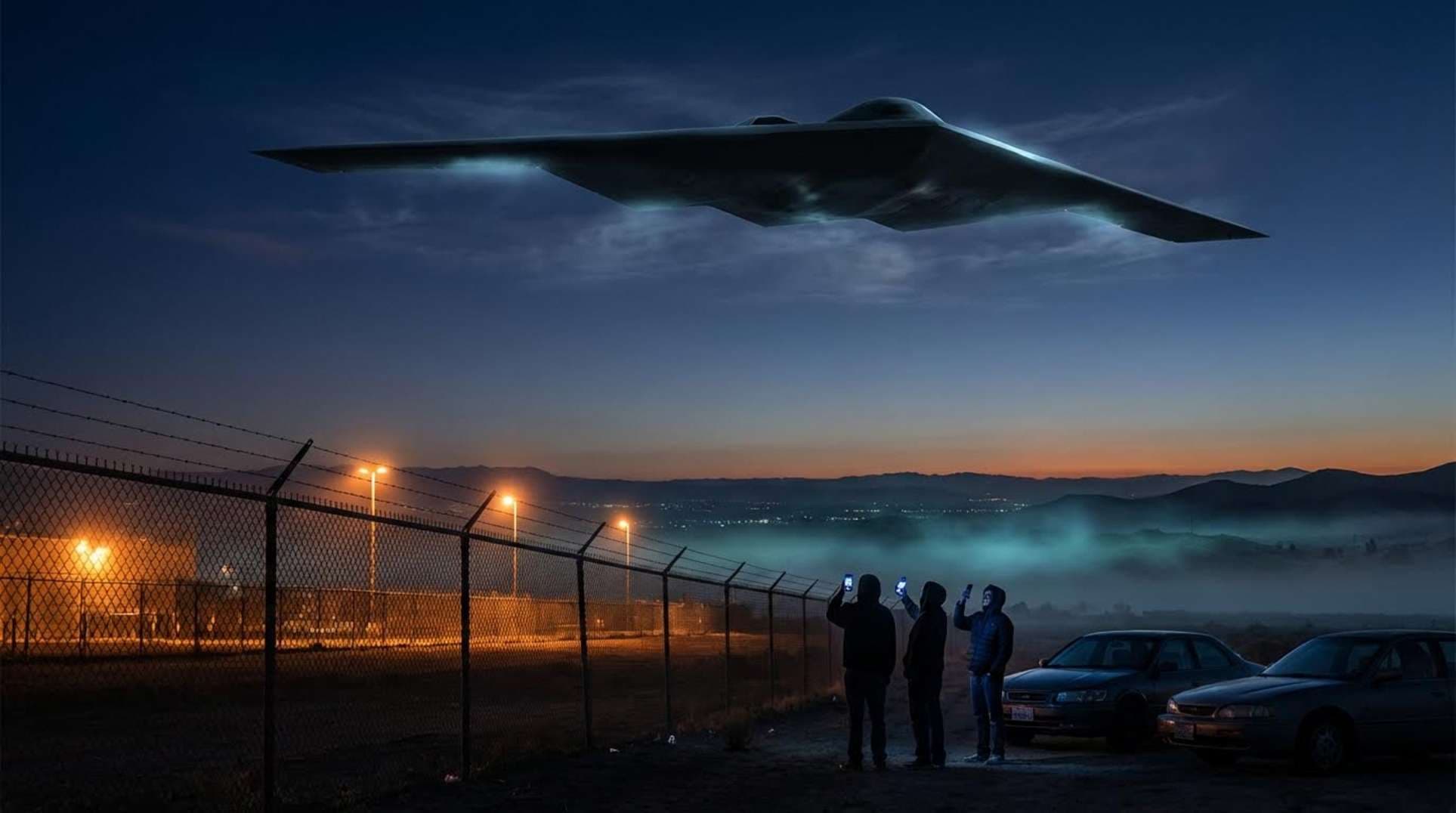Cryptozoology Chronicles: The Search for Unknown Creatures dives into the fascinating world of mysterious animals that have yet to be recognized by science. This article explores the history, famous legends, and ongoing efforts to uncover the truth behind these elusive beings. From the deep forests of North America to the vast oceans, the quest to find cryptids like Bigfoot, the Loch Ness Monster, and the Chupacabra continues to capture the imagination of many.
Key Takeaways
- Cryptozoology is the study of creatures that are not yet recognized by mainstream science, known as cryptids.
- Famous cryptids include Bigfoot, the Loch Ness Monster, and the Chupacabra, each with its own set of legends and sightings.
- Water-based cryptids, such as lake monsters and sea serpents, have been reported in various parts of the world.
- Land-based cryptids like Mokele-Mbembe and Australia’s Yowie are subjects of ongoing research and expeditions.
- Modern technology and citizen science are playing significant roles in the search for and study of these mysterious creatures.
The Origins of Cryptozoology
Cryptozoology, the study of animals that are rumored to exist but have not been proven, has a rich and fascinating history. The term ‘cryptid’ refers to creatures like Bigfoot or the Loch Ness Monster that are claimed to exist but lack scientific proof. This field blends folklore, exploration, and science, making it a unique area of study.
Early Explorations and Discoveries
In the early days, explorers and naturalists often reported sightings of strange creatures during their travels. These accounts, though sometimes exaggerated, laid the groundwork for modern cryptozoology. Early explorers like Marco Polo and Sir John Mandeville wrote about mysterious animals they encountered, sparking curiosity and further expeditions.
Influential Figures in Cryptozoology
Several key figures have shaped the field of cryptozoology. Bernard Heuvelmans, often called the ‘father of cryptozoology,’ wrote extensively on the subject and brought scientific rigor to the study of unknown animals. Another notable figure is Ivan T. Sanderson, who combined his background in biology with a passion for the unexplained, contributing significantly to the field.
The Evolution of the Field
Over time, cryptozoology has evolved from mere storytelling to a more structured field of study. Advances in technology, such as DNA analysis and remote cameras, have provided new tools for researchers. Today, cryptozoologists use a combination of traditional fieldwork and modern scientific techniques to investigate reports of unknown creatures.
The journey from myth to potential reality is what makes cryptozoology so captivating. It challenges our understanding of the natural world and keeps the spirit of discovery alive.
Famous Cryptids and Their Legends
Cryptozoology dives into the mysteries of legendary creatures that could be real. We look at eyewitness reports, science clues, and the links to known animals. The mystery of hidden creatures sparks our imagination and keeps us searching. It merges science, folklore, and the yearning to unfold nature’s secrets.
Cryptids of the Water
Lake Monsters Around the World
Lake monsters have fascinated people for centuries. These creatures are often described as large, serpent-like beings that dwell in deep lakes. One of the most famous lake monsters is the Loch Ness Monster in Scotland. Sightings of this creature date back to the 6th century AD. In 2017, locals in Alaska claimed to have seen a 50-60 foot long beast accompanied by smaller creatures, blowing water from its back in a manner reminiscent of a whale.
Sea Serpents and Oceanic Mysteries
Sea serpents are another type of water cryptid that has captured human imagination. These creatures are said to be enormous, snake-like beings that inhabit the world’s oceans. Reports of sea serpents date back to ancient times and continue to this day. Some believe these sightings could be misidentified marine animals, while others think they might be undiscovered species.
The Mermaids and Manatees Connection
The legend of mermaids, half-human and half-fish beings, has been a part of maritime folklore for centuries. Interestingly, some researchers believe that these tales might have originated from sightings of manatees. Manatees, also known as sea cows, are gentle marine animals that live in warm coastal waters. Their human-like appearance and behavior could have inspired the mermaid myth. This connection shows how real-life animals can spark legendary stories.
Cryptids of the Land
Mokele-Mbembe: The Congo’s Living Dinosaur
Deep in the Congo Basin, tales of Mokele-Mbembe have fascinated explorers and locals alike. This creature, often described as a living dinosaur, is said to inhabit the remote rivers and swamps of the region. Eyewitnesses report seeing a large, long-necked animal, reminiscent of a sauropod. Despite numerous expeditions, concrete evidence remains elusive, keeping the mystery alive.
The Marozi: Africa’s Spotted Lion
In the highlands of Kenya’s Aberdare Mountains, stories of the Marozi, or spotted lion, have intrigued cryptozoologists for decades. Unlike typical lions, the Marozi is said to have a spotted coat, similar to that of a leopard. The first documented sighting was in the early 20th century, and while some believe it to be a distinct species, others think it might be a genetic mutation. The mystery of the Marozi continues to captivate those who seek to understand Africa’s hidden wildlife.
Australia’s Yowie: The Hairy Man
Australia’s vast wilderness is home to tales of the Yowie, a creature similar to North America’s Bigfoot. Described as a large, hairy, ape-like being, the Yowie is said to roam the dense forests and remote areas of the continent. Reports of encounters with the Yowie date back to Aboriginal legends, and modern sightings continue to this day. The search for the Yowie combines elements of folklore and modern cryptozoological investigation, making it a compelling subject for researchers and enthusiasts alike.
Eyewitness Accounts and Evidence
Cryptozoology relies heavily on eyewitness accounts and various forms of evidence to support the existence of cryptids. These accounts often come from people who claim to have seen creatures like Bigfoot or the Loch Ness Monster. While these stories are intriguing, they are often met with skepticism due to the lack of concrete proof.
Famous Sightings and Encounters
Over the years, there have been numerous reports of cryptid sightings. For instance, the U.S. has gathered over 10,000 stories about Bigfoot in the past 50 years. These accounts provide a rich source of information for researchers, even though many are anecdotal. Some of the most famous sightings include the Patterson-Gimlin film from 1967, which allegedly shows Bigfoot walking through a forest. Despite ongoing debates about its authenticity, this film remains one of the most well-known pieces of evidence in cryptozoology.
Physical Evidence and Footprints
Physical evidence, such as footprints, plays a crucial role in cryptozoological research. John Green listed 1,340 Bigfoot tales over the 1800s and 1900s, many of which included descriptions of footprints. These footprints are often large and human-like, sparking curiosity and further investigation. However, the challenge lies in verifying the authenticity of these prints, as some have been proven to be hoaxes.
Photographic and Video Evidence
Photographic and video evidence is another important aspect of cryptozoology. The famous Patterson-Gimlin film is a prime example, but there are many other photos and videos that claim to show cryptids. While some of these images are compelling, they are often blurry or inconclusive, making it difficult to draw definitive conclusions. Despite this, the search for clear and undeniable photographic evidence continues, fueled by the hope of one day proving the existence of these mysterious creatures.
The quest for cryptids is a fascinating blend of anecdotal evidence, physical clues, and modern technology. While skepticism remains, the ongoing search keeps the mystery alive and continues to captivate the imagination of many.
Scientific Approaches to Cryptozoology
DNA Analysis and Modern Techniques
Cryptozoologists use DNA analysis to study samples from their searches. This helps them figure out if a sample comes from a known animal or something new. For example, in 2013, hair samples were linked to a 40,000-year-old polar bear. This shows how modern techniques can lead to surprising discoveries.
Field Research and Expeditions
Field research is a big part of cryptozoology. Scientists and enthusiasts go on expeditions to find evidence of cryptids. They use tools like remote cameras and tracking devices to gather data. These expeditions are often in hard-to-reach places, making the search both exciting and challenging.
Challenges in Cryptozoological Research
Cryptozoologists face many challenges. One big issue is the lack of solid proof. Mainstream science often demands rigorous evidence to accept the existence of cryptids. This makes it hard for cryptozoologists to get their findings taken seriously. Despite these challenges, the search for unknown creatures continues to spark scientific exploration and inspire new discoveries.
The quest for cryptids blends scientific methods with the excitement of uncovering hidden wonders. This unique mix keeps the field of cryptozoology both challenging and thrilling.
Cultural Impact of Cryptozoology
Cryptozoology has deeply influenced our culture, seen in books, movies, and media. Bigfoot, the Loch Ness Monster, and the Chupacabra are well-known. They appear in various titles, drawing us in and sparking our imagination.
Cryptids in Literature and Media
Cryptozoology thrives on the unknown, making it a cultural cornerstone. It adds mystery to our world, changing how we view our environment. Creatures from tales like Tolkien’s and King’s stories are now revered. They intrigue readers, making them seek more about these cryptids. Hollywood, too, is not immune. Its blockbusters, including "Jurassic Park" and "Kong: Skull Island," mesmerize us with these legendary beings.
Folklore and Mythology
Cryptozoology’s essence lies in ancient legends and stories, making it part of our culture’s narrative. Whether the Yeti or the Loch Ness Monster, these mythical animals are part of our storytelling traditions. The mystery behind these creatures transcends just science, becoming a key aspect of our shared stories and imagination.
Cryptozoology has shaped our world through stories and legends alone. Its impact continues to lure us into the secrets of our planet. With ongoing exploration, these cryptids arouse our curiosity, beckoning us to uncover their mysteries.
Cryptid Festivals and Community Events
Communities known for their cryptids now thrive, drawing in visitors with things like festivals and museums. These events celebrate the local legends and bring people together. They offer a mix of fun and education, keeping the spirit of cryptozoology alive.
Cryptozoology is the study of creatures whose existence has yet to be—or else cannot entirely be—proved or disproved by science. These creatures, known as cryptids, include Bigfoot, the Loch Ness Monster, and the Yeti.
Controversies and Skepticism
Cryptozoology faces a lot of doubt from mainstream science. Scientists often demand solid proof and rigorous research to confirm the existence of these creatures. This skepticism can make it hard for cryptozoologists to present their findings convincingly.
Scientific Criticism and Debate
The scientific community is generally very critical of cryptozoology. They argue that without concrete evidence, the field lacks credibility. This has led to many debates about the validity of cryptozoological research. Balancing a curious mind with a need for solid proof is key to learning more about our world.
Hoaxes and Misidentifications
One of the biggest challenges in cryptozoology is dealing with hoaxes and misidentifications. Many reported sightings of cryptids turn out to be false alarms or deliberate fabrications. This not only undermines the field but also makes it harder for genuine discoveries to be taken seriously.
Balancing Belief and Evidence
Cryptozoologists walk a fine line between belief and evidence. While the quest for unknown creatures is driven by curiosity and wonder, it is essential to back up claims with solid proof. This balance is crucial for the field to gain more acceptance and respect.
The search for cryptids is both challenging and exciting. Cryptozoologists blend scientific rules with the drive to reveal unseen wonders around us.
The Future of Cryptozoology
Technological Advancements in the Field
As technology advances, so does the field of cryptozoology. New tools and methods are making it easier to search for and study cryptids. For example, remote cameras and drones can capture images and videos in hard-to-reach places. DNA analysis helps scientists identify unknown samples more accurately. These advancements are opening up new possibilities for discovering hidden creatures.
The Role of Citizen Science
Citizen science is becoming a big part of cryptozoology. Mobile apps and websites let people share their sightings and work with experts. This has greatly increased the amount of information available to researchers. Communities known for their cryptids are thriving, drawing in visitors with festivals and museums. The support from the public has given cryptozoologists fresh clues and ideas.
Potential Discoveries on the Horizon
The future holds many exciting possibilities for cryptozoology. With the help of new technology and citizen science, we may soon discover new species or find evidence of cryptids that have long been considered myths. The search for unknown creatures continues to captivate our imagination and drive scientific inquiry.
The study of cryptozoology keeps drawing worldwide interest. People are fascinated by the idea of finding legendary beasts that could be real. It offers a unique mix of science, myth, and the human urge to solve the mysteries of the unknown.
Conclusion
Cryptozoology continues to captivate people around the globe. The quest to uncover legendary creatures blends science, folklore, and the human desire to explore the unknown. From the connections between mermaids and manatees to the theories linking Bigfoot with ancient sloths, these mysteries spark curiosity and debate. Modern technology and community efforts are pushing the boundaries of this field, combining rigorous scientific methods with the thrill of discovery. The stories and investigations in cryptozoology remind us that our world still holds many secrets, fueling our imagination and drive to uncover the hidden wonders around us.
Frequently Asked Questions
What is cryptozoology?
Cryptozoology is the study of animals that people claim to see but that scientists haven’t confirmed are real. These animals are called “cryptids.” Examples include Bigfoot, the Loch Ness Monster, and the Yeti.
How did the legend of mermaids start?
The legend of mermaids likely began when sailors saw manatees. Manatees are large sea animals that have some human-like features, which might have sparked the idea of mermaids.
Is there a connection between Bigfoot and giant sloths?
Some people think Bigfoot might be related to giant sloths that lived long ago. These sloths were huge and lived on the ground. Stories about Bigfoot sometimes describe features that are similar to those of giant sloths.
What are some famous cryptids?
Some famous cryptids include the Yeti, Chupacabra, Loch Ness Monster, and Thunderbird. These creatures are part of legends and stories from different parts of the world.
How do cryptozoologists gather evidence?
Cryptozoologists use scientific methods to gather evidence. They study footprints, hair samples, and photos. They also use tools like remote cameras and DNA testing to help identify unknown animals.
What challenges do cryptozoologists face?
Cryptozoologists face challenges like skepticism from mainstream scientists who want solid proof. They also have to deal with hoaxes and misidentifications, which can make their work harder.
How has technology helped cryptozoology?
Technology has made it easier for cryptozoologists to gather and study evidence. Tools like remote cameras and DNA analysis help them find and analyze clues about cryptids.
What impact does cryptozoology have on culture?
Cryptozoology has a big impact on culture. It inspires books, movies, and festivals. Cryptids like Bigfoot and the Loch Ness Monster are popular in stories and media, sparking people’s imagination.




